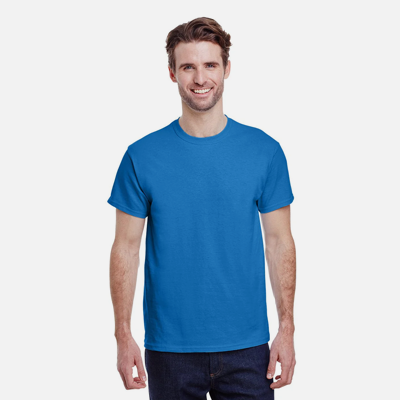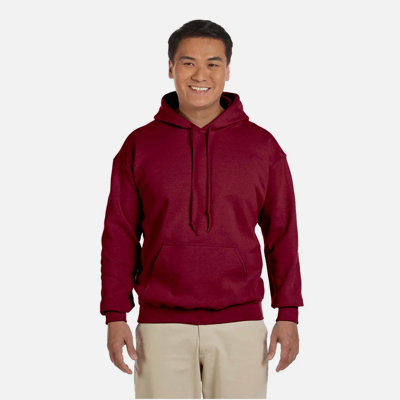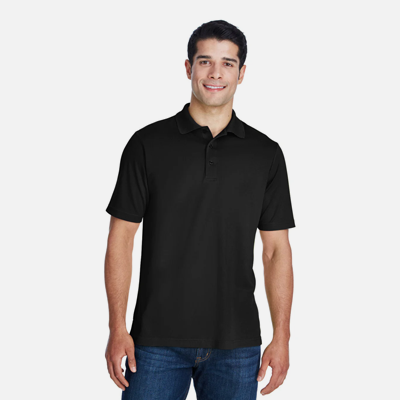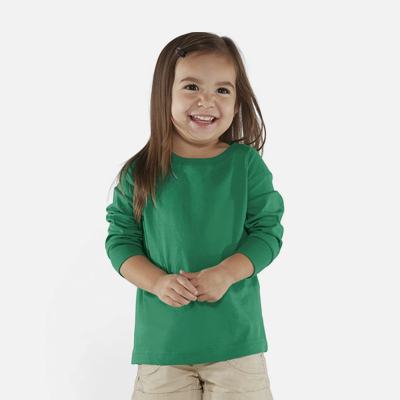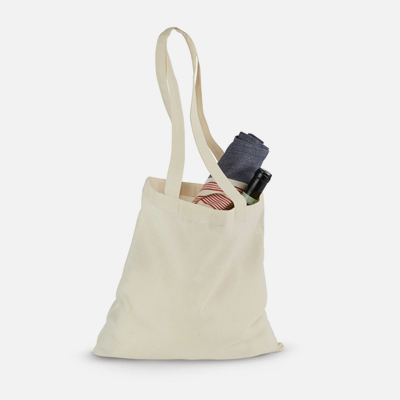At the crossroads of print methods for your upcoming project or business plan? If you're deciding between DTF and screen printing, our detailed guide is here to illuminate your path. We delve into the features of each technique, explain the differences, and look at the advantages of each–as well as potential challenges. Armed with knowledge and clarity, you'll make the wise choice on your journey. Let's begin.
What's the difference between DTF and screen printing?
Both methods are popular and produce excellent results. To properly compare these two titans of the printing world, along with the hybrid method of screen print transfers, let's take a look at what they are, how they work, and how they differ.
DTF Printing
Direct to Film (DTF) is a cutting-edge customization that involves printing a design directly onto a film and coated with adhesive powder. The printed design is then transferred to a substrate (usually fabric) with a heat press, resulting in a durable, vibrant, high-quality print. DTF transfers shine in their versatility—it can transfer intricate, full-color designs onto a wide range of materials, even those hard-to-print dark and textured surfaces.
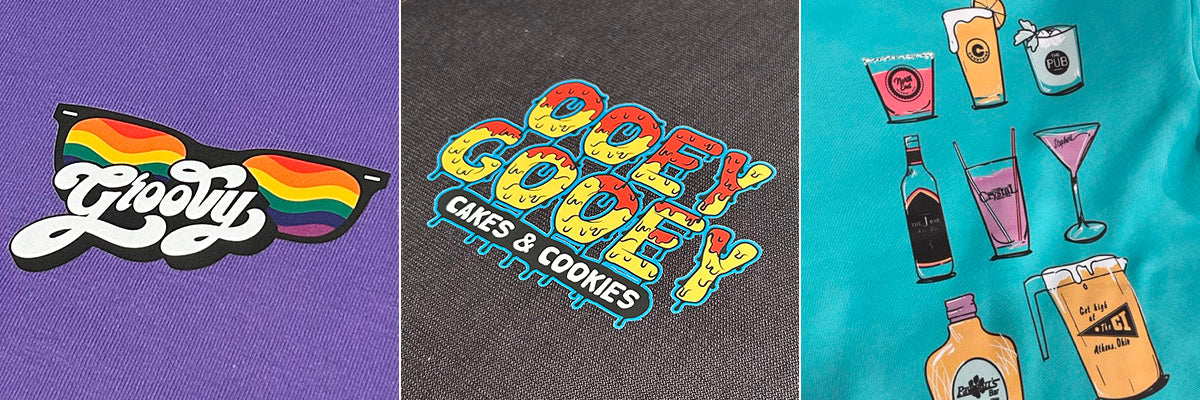
Screen Printing
Next up, we have traditional screen printing. This classic method involves creating a stencil (or screen) for each color in a design and pushing layers of ink onto the print surface. Each color is applied using a different screen, one at a time, and combined to achieve the final look. Screen printing is famous for its durability and vibrant colors, and it's a popular choice for bulk orders due to its cost-effectiveness in large quantities.

Screen Print Transfers
Screen Print Transfers are a sub-category of screen printing that involves printing a screen-printed design onto a special release paper. The printed design on the release paper can then be heat pressed onto a substrate, just like a DTF print. This method offers many benefits of traditional screen printing, but with added convenience – you can print the transfers in bulk and apply them later.
Quick Overview For Businesses
Businesses, especially those in the printing industry, must choose their printing method carefully, considering several factors that can significantly impact the bottom line and customer satisfaction. From a business perspective, here's a brief overview of the differences between DTF, screen printing, and screen print transfers.
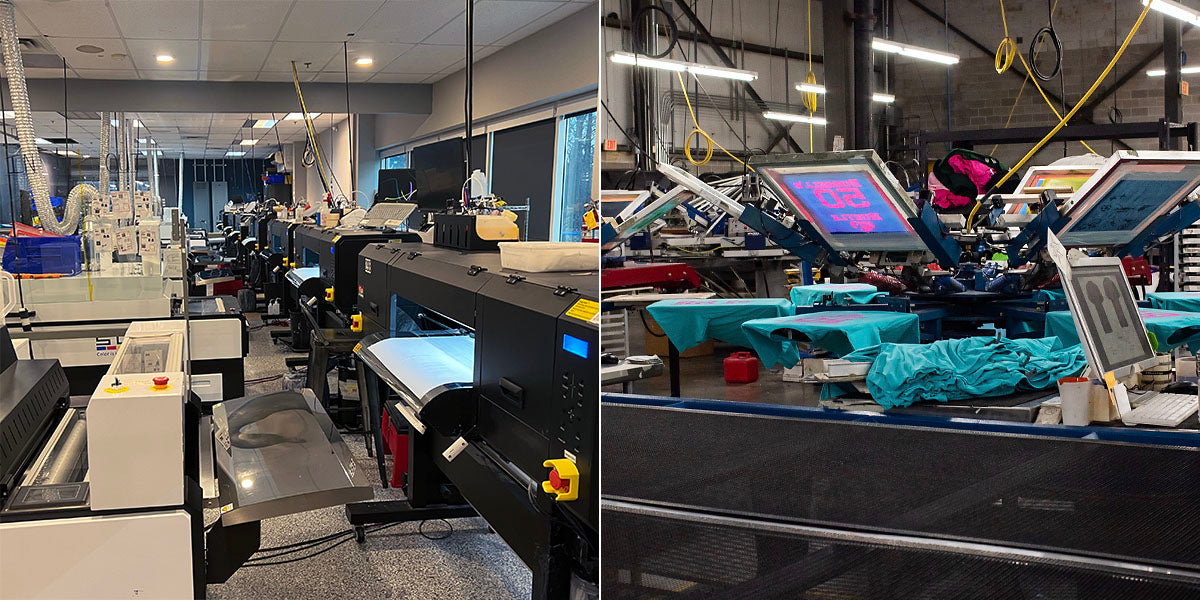
Differences between DTF, screen printing, and screen print transfers
Setup and running costs: Traditional screen printing involves higher upfront costs that cover screen creation, ink, and labor, especially when dealing with multi-color designs. Pre-printed DTF transfers and screen print transfers have lower setup costs, allowing for more affordable small batch productions.
Design complexity and colors: DTF excels in handling intricate, multicolored designs as it can print full-color images in a single pass. Screen printing is ideal for simpler designs or designs with fewer colors due to the need for a separate screen for each color.
Versatility: DTF is highly versatile and can print on various materials, including dark and textured fabrics. Screen printing, while effective on light, smooth surfaces, struggles with darker materials and requires different types of ink for different materials.
Turnaround time: DTF can offer a faster turnaround, particularly for small to medium-sized orders or designs with many colors, since it prints all colors simultaneously. On the other hand, screen printing requires more time for creating screens and drying between each color layer.

DTF vs. Screen Prints For Individuals And Brands
Whether you're a hobbyist trying out a new printing technique or a startup brand looking to customize a small number of items, your chosen printing method will directly impact the final product. Below, we compare DTF, screen printing, and screen print transfers on various factors.
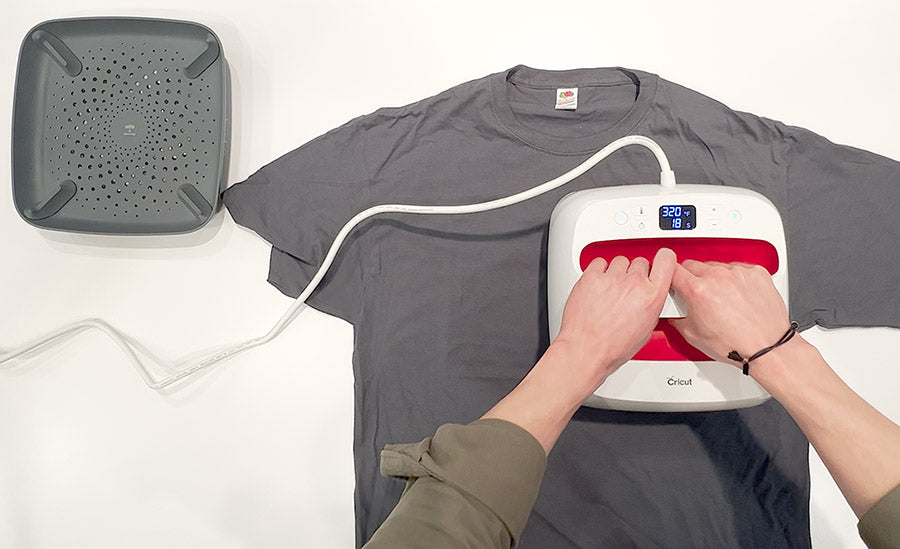
Quality Of Print
DTF Transfers produce high-definition, photorealistic prints thanks to its ability to print full-color images with impressive detail. Screen printing delivers vibrant, opaque colors but struggles with complex or detailed designs. Screen print transfers, like screen printing, offer bright colors, but the quality largely depends on the screen print quality used to create them.
Color Reproduction
DTF Transfers excel in reproducing a wide range of colors in one print, making them ideal for colorful or complex designs. Screen printing requires a new screen for each color, making it more suitable for designs with few colors or that needs specific, accurate colors. Screen print transfers, much like Screen printing, are limited by the number of colors they can efficiently reproduce in a design.
Cost Implications
For individuals, the cost-effectiveness of each method depends on the scale and complexity of the project. DTF Transfers have minimal setup costs and are economical for small quantities. Screen printing can be more cost effective for large quantities but involves higher setup costs. Screen print transfers offer a middle ground, especially if you are okay with outsourcing the screen print creation.
Versatility
DTF Transfers are versatile, printing on various materials, including cotton, polyester, and blends. Screen printing works well on cotton and certain synthetics but might require special inks for other materials. Screen print transfers offer similar versatility to screen printing, as they are essentially pre-made screen prints.
Durability
With proper care, DTF Transfers are durable and can withstand many washes. Screen Printing directly applies ink to the fabric, resulting in a long-lasting print. Screen Print Transfers, once applied correctly, also provide a durable impression.
Design Constraints And Opportunities
DTF Transfers offer limitless design opportunities, from intricate detail to full-color images. Screen printing excels with simple, bold designs and struggles with complex ones. The same limitations as screen printing restrict screen print transfers.
Turnaround Time
DTF Transfers offer a quick turnaround, especially for complex, multi-color designs. Screen printing can take longer due to the need to create screens and dry between color layers. Screen print transfers can be applied quickly once the transfer is made.
Ink Types
DTF Transfers use water-based, pigmented inks using the CMYK process for full-color prints, and a special white ink underbase for vibrant colors on dark garments. Screen printing utilizes petroleum-based Plastisol inks, which are durable and vibrant, but require special handling and a high heating process to cure. Screen print transfers use the same type of ink as screen printing, and are made using that method.
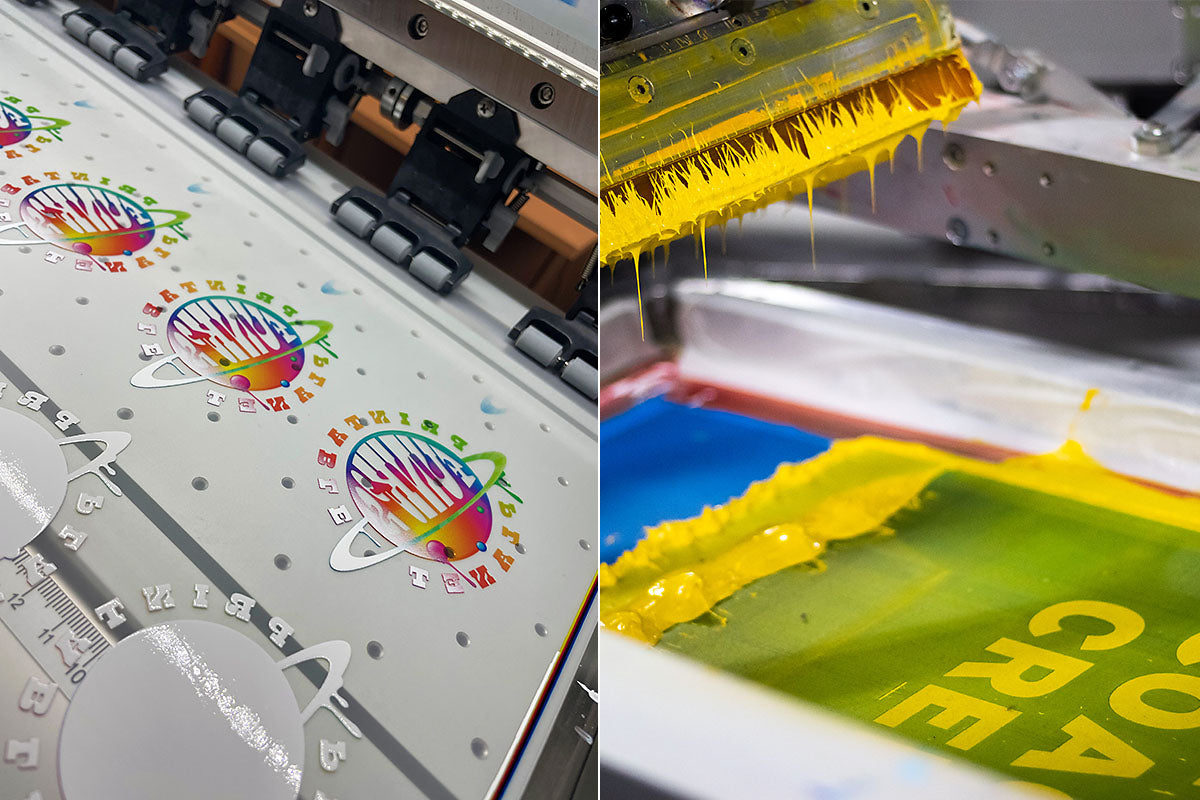
Which Is Better?
Determining which is better depends on your specific project requirements: DTF excels at vibrant, full-color designs on dark fabrics and is cost-effective for small runs, while screen printing is the go-to for larger print runs featuring simpler designs due to its scalability and cost-effectiveness in high volumes.
So if your project involves complex, multi-color designs in smaller quantities, DTF is the superior choice. For simpler designs in large quantities, screen printing is the answer.
Should you seek further guidance, we at Ninja Transfers stand ready, committed to help you make the wise choice for your printing needs. When the time is right, we encourage you to unleash the power of DTF transfers and embrace your inner Ninja.
Frequently Asked Questions
Can I use DTF or screen printing on all types of fabric?
DTF printing works exceptionally well on light and dark fabrics and is compatible with cotton, polyester, and blends. On the other hand, screen printing is versatile but may not provide the same vibrancy on darker fabrics without a base layer of white ink.
Is DTF more environmentally friendly than screen printing?
DTF printing uses water-based inks, requires no physical screens or harsh chemical cleaners, and is considered more environmentally friendly. Screen printing involves chemicals and solvents, especially during screen preparation and cleanup.
Is DTF safer for children's clothing than screen printing?
DTF and screen printing can be safe for children's clothing if the inks are non-toxic and correctly cured. Using inks compliant with safety standards like OEKO-TEX or CPSIA is recommended when printing for children.
How does the feel of DTF print compare to screen print?
DTF prints tend to have a softer hand feel and a smoother surface. Screen prints, while they can also be soft, typically sit thicker on the fabric, creating a more noticeable texture, especially on darker fabrics with a thick underbase of ink.
How durable is DTF compared to screen printing regarding washing and wear?
Both DTF and screen printing can be highly durable with proper care. When correctly applied, DTF prints can withstand many washes without significant fading or cracking. Screen prints can be very long-lasting but can crack over time due to the thicker layers of ink.
Can I achieve the same level of detail in a design with DTF as I can with screen printing?
Due to its digital printing process, DTF excels at reproducing highly detailed and full-color designs. Screen printing can also produce complex designs but may be a more limited option for intricate, multi-color patterns due to the use of separate screens for each color.








